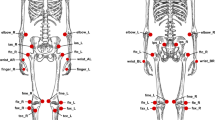Abstract
The internal sensors in smartphones for their advanced add-in functions have also paved the way for these gadgets becoming multifunctional tools in elementary experimental physics [1]. For instance, the acceleration sensor has been used to analyze free-falling motion (6) [2] and to study the oscillations of a spring-mass system (32) [3]. The ambient light sensor on the other hand has been proven to be a capable tool in studying an astronomical phenomenon [4] as well as in measuring speed and acceleration [5]. In this chapter we present an accurate, convenient, and engaging use of the smartphone magnetic field sensor to measure the acceleration due to gravity via measurement of the period of oscillations (simply called “period” in what follows) of a simple pendulum. Measurement of the gravitational acceleration via the simple pendulum is a standard elementary physics laboratory activity, but the employment of the magnetic field sensor of a smartphone device in measuring the period is quite new and the use of it is seen as fascinating among students. The setup and procedure are rather simple and can easily be replicated as a classroom demonstration or as a regular laboratory activity.
Access this chapter
Tax calculation will be finalised at checkout
Purchases are for personal use only
Similar content being viewed by others
References
Countryman, C.: Familiarizing students with the basics of a smartphone’s internal sensors. Phys. Teach. 52, 557 (2014)
Vogt, P., Kuhn, J.: Analyzing free fall with a smartphone acceleration sensor. Phys. Teach. 50, 182 (2012)
Kuhn, J., Vogt, P.: Analyzing spring pendulum phenomena with a smartphone acceleration sensor. Phys. Teach. 50, 504 (2012)
Barrera-Garrido, A.: Analyzing planetary transits with a smartphone. Phys. Teach. 53, 179 (2015)
Kapucu, S.: Finding the acceleration and speed of a lightemitting object on an inclined plane with a smartphone light sensor. Phys. Educ. 52, 055003 (2017)
Young, H.D., Freedman, R.A., Ford, A.L.: Sears and Zemansky’s University Physics, 13th edn, p. 454. Addison-Wesley (2012)
Sinacore, J., Takai, H.: Measuring g using a magnetic pendulum and telephone pick up. Phys. Teach. 48, 448–449 (2010)
We have downloaded the Android application Physics Toolbox Suites for free from Google Play.
Deacon, C.: Error analysis in the introductory physics laboratory. Phys. Teach. 30, 368 (1992)
We have obtained our local theoretical value of the acceleration due to gravity by inserting our altitude and longitude into a formula that appears at this website: https://www.npl.co.uk/resources/q-a
Acknowledgment
We are indebted to J. R. Bahinting, Harold Bolanon, and Rommel Gomez, laboratory attendants of the Department of Physics, University of San Carlos, for providing us the magnetic simple pendulum setup. We also thank the University of San Carlos, owner of the simple pendulum setup, and the editors whose comments and suggestions improved the manuscript.
Author information
Authors and Affiliations
Corresponding author
Editor information
Editors and Affiliations
Rights and permissions
Copyright information
© 2022 The Author(s), under exclusive license to Springer Nature Switzerland AG
About this chapter
Cite this chapter
Pili, U., Violanda, R., Ceniza, C. (2022). Measurement of g Using a Magnetic Pendulum and a Smartphone Magnetometer. In: Kuhn, J., Vogt, P. (eds) Smartphones as Mobile Minilabs in Physics. Springer, Cham. https://doi.org/10.1007/978-3-030-94044-7_30
Download citation
DOI: https://doi.org/10.1007/978-3-030-94044-7_30
Published:
Publisher Name: Springer, Cham
Print ISBN: 978-3-030-94043-0
Online ISBN: 978-3-030-94044-7
eBook Packages: Physics and AstronomyPhysics and Astronomy (R0)




